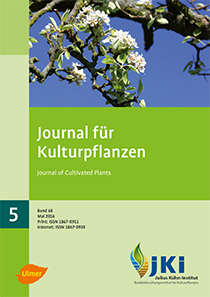Confirmation of an ALS-resistant <em>Lolium perenne</em> population in Northern Germany
Keywords:
Lolium perenne, resistance, TSR, NTSR, perennial ryegrass, ACCase, ALS, clethodim, clodinafop, cycloxydim, iodosulfuron, mesosulfuron, pinoxaden, propoxycarbazone, pyroxsulam/florasulam, isoproturonAbstract
In the east of Schleswig-Holstein, in the recent years on a farmland were grown winter barley, winter oilseed rape and winter wheat in a three-year crop rotation. In autumn and spring 2014/15, severe problems to control perennial ryegrass (Lolium perenne) were recognized for the first time in field-trials. Based on these observations and the use of the same herbicides in recent years, the suspect population was tested for a possible herbicide resistance. After a plant sampling in the spring of 2015 and subsequent greenhouse bioassays with different doses of ACCase and ALS inhibitors, followed by a molecular resistance testing, a hitherto unknown ALS-resistant weed species was confirmed in Schleswig-Holstein. In addition to a marked resistance to ALS inhibitors, a potential metabolic resistance in the form of first effect losses against aryloxyphenoxy-propionates and clethodim was observed in the suspect population.
DOI: 10.5073/JfK.2016.05.01, https://doi.org/10.5073/JfK.2016.05.01
Downloads
Published
Issue
Section
License
The content of the journal is licensed under the Creative Commons Attribution 4.0 License. Any user is free to share and adapt (remix, transform, build upon) the content as long as the original publication is attributed (authors, title, year, journal, issue, pages).
The copyright of the published work remains with the authors. The authors grant the Journal of Cultivated Plants, the Julius Kühn-Institut and the OpenAgrar repository the non-exclusive right to distribute and exploit the work.







